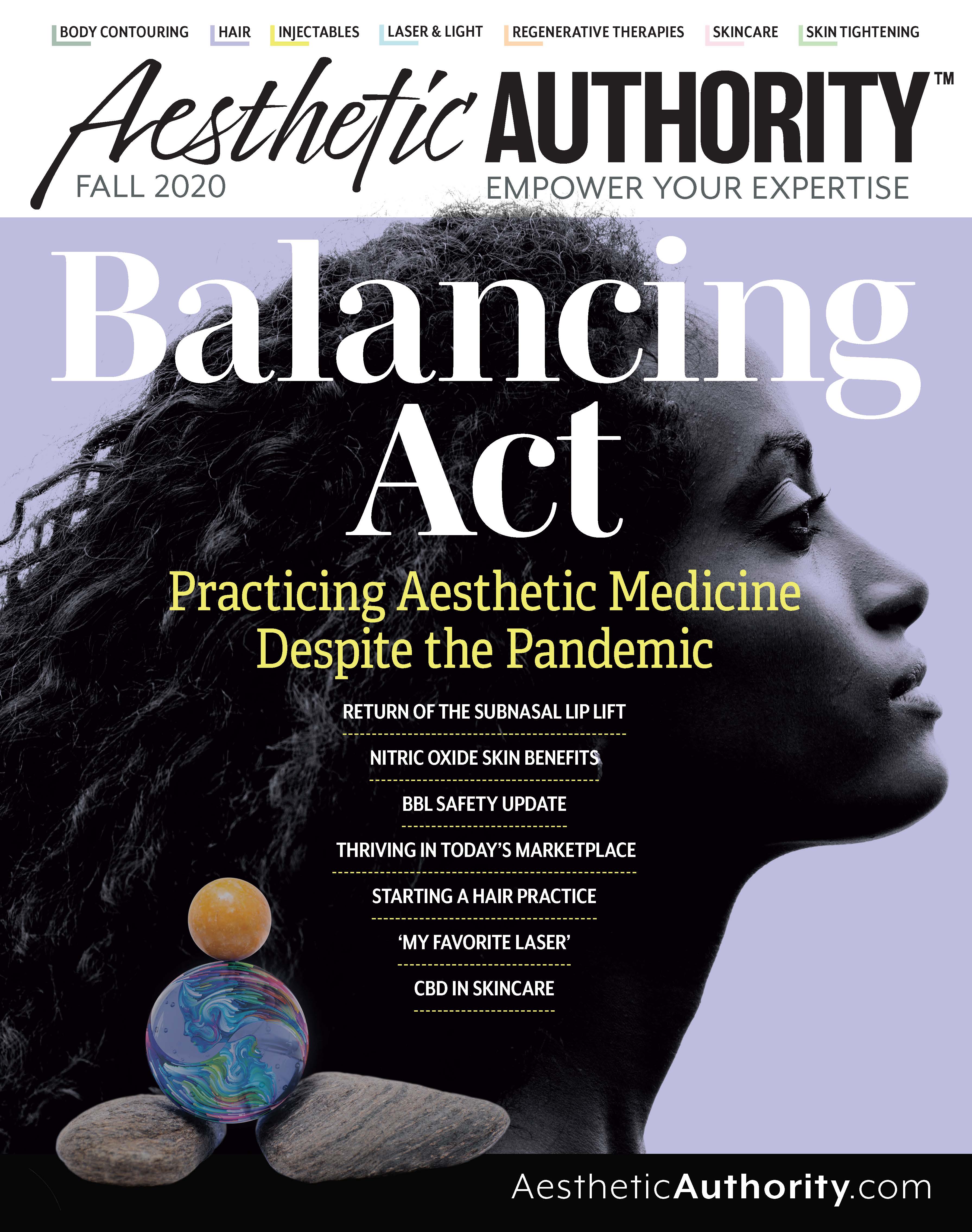- Case-Based Roundtable
- General Dermatology
- Eczema
- Chronic Hand Eczema
- Alopecia
- Aesthetics
- Vitiligo
- COVID-19
- Actinic Keratosis
- Precision Medicine and Biologics
- Rare Disease
- Wound Care
- Rosacea
- Psoriasis
- Psoriatic Arthritis
- Atopic Dermatitis
- Melasma
- NP and PA
- Skin Cancer
- Hidradenitis Suppurativa
- Drug Watch
- Pigmentary Disorders
- Acne
- Pediatric Dermatology
- Practice Management
- Prurigo Nodularis
- Buy-and-Bill
Publication
Article
Aesthetic Authority
A Pandemic Protocol for Facial Injections
Author(s):
According to Dr. Suneel Chilukuri, masks make injectable treatments more difficult but he has refined a safe and effective approach.
This is part 2 of a 2-part series.
Part 1: Demand for Injectables Grows During COVID-19
As the desire and demand for injectable treatments continues to grow, treating physicians are at greater risk of COVID-19 exposure from mouth and nose fluid transfer.
In response, aesthetic practices across the U.S. have put safety protocols and procedures into place to help protect both patients and staff from possible infection, including mandatory mask-wearing of every person who comes into the practice.
“We're in Texas, so it is a hotspot… and people are definitely more aware of the importance of wearing a mask,” says Dr. Chilukuri.
However, he says, patients wearing masks for their injectable appointments have made consultations more difficult.
“Normally when we do a consultation… I'm analyzing the entire face while we're talking to the patient,” he says. “[Now] I don't get to see all the motions. Especially for how I practice, the biggest thing is understanding the three-dimensional interaction between bone, muscle, skin, and fat. That's been a little bit more difficult.”
Dr. Chilukuri’s safety protocol is similar to that being implemented by other practices, but he also is taking a few extra measures he has found to be effective, including the handling of patient personal effects brought into the practice, sterilization methods, and air exchange.
When patients arrive at the practice, Dr. Chilukuri has them stay in their car and text the office. Once they are ready for the patient, a staff member greets and escorts them inside.
“It's completely contactless, they don't touch a single surface in our office,” he says.
Once inside, the patient turns to a video hand sanitizer by Friend Media that talks them through their specific procedure while they put their hands under the automatic hand sanitizer dispenser.
Once escorted into a treatment room, there is a plastic bin for patients to place their personal items.
“If you have any personal effects you brought with you, a purse or anything like that, [you're] going to put the purse down in the bin because we can sterilize [it] in between patients,” he says. “[That way] there's nothing that's contacting anything else in the office other than that plastic bin.”
Patients are encouraged to keep their masks on until Dr. Chilukuri invites them to take it off. He then immediately sprays Lasercyn [Sonoma Pharmaceuticals], an antimicrobial hypochlorous acid (HOCl)-based product for use in the management of skin abrasions, lacerations, minor irritations, cuts, and intact skin.
“As soon as the person takes off the mask, we've already sprayed Lasercyn on their hands, as well as their face, so that way we're letting it sit because that typically kills off bacteria, fungus, yeast, and viruses in less than 60 seconds of contact,” he says. “In 2015, [HOCI] was tested against all the corona viruses that we knew of at that time and showed a 99.9% kill rate.”1
Dr. Chilukuri notes that his office’s air exchange is between 6 and 6.2 times per minute. By comparison, “The OR typically has an air exchange of about five. There's two UVC filters that are sterilizers before the coil and there's another two after the coil in the AC unit. We know that the air that's going through there has been sterilized.”
He also employs the use of a face shield over his N95 or KN95 mask for extra protection.
Once the treatment area is sterilized, Dr. Chilukuri uses his normal injection technique and then sends the patient home with an 8 oz. version of Lasercyn for posttreatment use.
Dr. Chilukuri says that since reopening his practice and putting these protocols into place, he is pleased with what they have been able to achieve.
“I'm doing kind of a quadruple protocol versus what I used to do, which was a triple protocol,” he says. “Honestly, I think a lot of it is just to make myself and our team feel better. We haven't had any infections and we're blessed so far.”
References:
Hakim H, Thammakarn C, Suguro A, et al. Evaluation of sprayed hypochlorous acid solutions for their virucidal activity against avian influenza virus through in vitro experiments. J Vet Med Sci. 2015;77(2):211-5.






